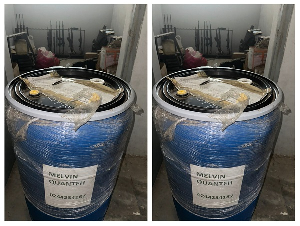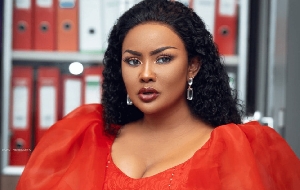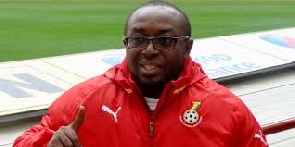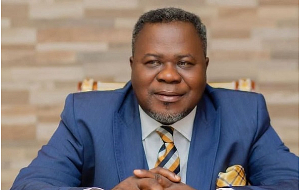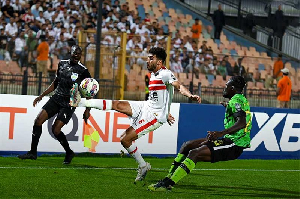Going to Brazil was too prompt since I had just come from Ghana but I couldn’t say no to such an offer from a daughter who knew I was so crazy about the country and was willing to finance the trip.
To start with, I believe inquiring minds would like to know how the name Brazil came about. It is said that in 16th to 18th centuries the Portuguese explorers who first colonized the area mainly exploited for Brazilwood. “It is a dense, orange-red wood, and it is the premier wood used for making bows for string instruments from the violin family. The wood yields a red dye called Brazilin…..Brazilwood trees were such a large part of the exports and economy of the land that the country which sprang up in this part of the world took its name from them and is now called Brazil.” This was before the exploitation of sugarcane in Brazil. From this summation one may assume their nation’s flag would take a red hue. Actually I didn’t investigate the meaning of their National Flag.
Well we took off from Dallas/Forth Worth International in Texas to Miami, Florida and waited there for about two hours before heading on to Brazil with TAM, a Brazilian airline. I couldn’t take my eyes off the screen that showed the details and the progress of the trip. Those of you international travelers know what I am referring to. Soon the Key West at the southern tip of Florida, the islands of Cuba and Jamaica got behind us and headed on to the upper fringes of the continent of South America. The whole trip was already getting filled with great milestones, the first time of visiting a South American country and believe it or not, my first time of crossing the equator to the southern hemisphere of the world. Soon we were flying over the landmass of Brazil.
Flying from the upper boarders of Brazil to San Palo, Brazil, the hob of TAM took the majority of the little over seven hours duration of the trip for the country is very large. We later learned it is larger than USA without Alaska. From San Palo we took a transit plan to Rio De Janeiro, the former capital of Brazil. The day was still young when we landed here, it was about 9:30 am, and after going through Immigration we were greeted with a very welcoming sight. Our escort was holding a card with our names waiting to take us to our hotel. Soon we felt so handicapped so far as language was concerned. You could hardly find anyone who spoke English and felt so lost without our guide. We spent three nights in Rio De Janeiro where our guide spoke about five languages -Portuguese, French, Spanish, German and English. We were shown around the city in a large air-conditioned tour bus with other tourists from different countries. The guide had to speak in all kinds of languages. English-speaking people were in the minority in the group. We had more people from France and Spanish speaking countries. With the guide having to speak all the different languages, it took a while to get to know things. It was an experience since one always heard only English on a guided tour.
Rio De Janeiro is mainly made up of cone-like peaks and valleys. Some of the peaks are so tall one could hardly make out the summits, which are mostly shrouded in dense clouds. On top of one of these peaks stands the famous statue of Jesus Christ (Christ the Redeemer Statue) overlooking the city of Rio de Janeiro. We took a train ride to a point on a mountain with a very sharp gradient. On the ride up in our twists and turns you see different monuments on the sides of the rails decorated in different colors, some how depicting some of the animals, I think, that could be found in that vicinity. After the train ride to a point on the mountain we rode an elevator to some station where refreshments and souvenirs were sold. From here one has to climb some stairs to where the statue is actually standing. At this point one could feel his/her head virtually in the clouds and getting treated with a spectacular panoramic view of the city down below. The statue was a breath taken sight. Standing in front of the statue of Christ was an awe-inspiring. It looked like the epitome of all monuments and one could only wonder who could conceive such a project, and the tedious logistics of traversing such a peak with the materials for such a project were mind-boggling.
Two individuals, engineer Heitor da Silva Costa and French-Polish architect Paul Landowsky were instrumental in its construction. The structure was built with reinforced concrete instead of steel and the outer layer made of Soapstone because of its malleability (ability to stretch) and resistance to extreme weather. The statue stands 38 m (125 feet) tall and is located on a peak of 710m (2330ft), standing as tall as seven stories high, and weighing hundreds of tons. The base of the statue is a Catholic church with services constantly in session.
One can’t go to Brazil without watching a football match. The match we watched was one between Flamingos, the number one team in the city, Rio, verses Frumenes, the number two team. It was played in the largest football stadium in the world holding well over 100,000 spectators. It was built for the 1950 world cup played in Brazil. As we were told by our guide, in the finals of that game Brazil lost 2:1 to Uruguay. Soon after that game, we were told some Brazilian funs committed suicide, lots had heart attacks and of course the national flag was placed on half staff for about a week. The passion for football here was nothing I had ever seen. Frumenes open the scores with a header from a crossing pass. We happened to be sitting in a neutral zone but the red and black horizontal strips jerseys of the Flamingos were dominant. Nonetheless the few Frumenes supporters in this zone could cheer the goal without retributions but one could still sense the deadening silence amongst the Flamingos after the opening score. It wasn’t long before the Flamingos got a free kick just outside the eighteen. A player lined it up with a wicked left short and found the back of the net to send the supporters of Flamingos into a shouting frenzy. They went into the half time one goal apiece. The Flamingos dominated in all the second half and took care of their opponents to end the match with a resounding 4-1 victory.
It was interesting to learn that in Brazil actually volleyball is the number one sport, next came football. Brazil has won the world volleyball tournament six times compared to football, five times.
We found the Brazilians very health conscious, you see people of all ages jogging everywhere. The people were beautiful and had little reservations on being discreet with their bodies. Women in G-strings and men in tight Speedos were seen openly everywhere on the beachfronts. The people were not wary of strangers and were very courteous and polite but could hardly meet anyone who spoke English. One lady had the nerve to come to me and ask for directions, thinking I was one of them. I laughed and said to my self, “Lady you probably never want to get home???”
Well I am sure you all know it is a well-known fact that Brazil has the largest Black population besides Nigeria. As I saw it, Blacks as we know them in Black Africa who are dark brown or bronze-like looking thorough bread Black Africans like my color were not very common.
As a matter of fact most of the so called Blacks in Brazil were mixed with American Indians, Portuguese, Spanish, Italians, Arab and other races. In the last city we land, Salvador in the state of Bahai, which was supposed to be the Black Mecca of Brazil, most non-whites we saw were very light in complexion thus creating all kinds of name categories to describe their non-white population. Names like Negro/Preto and mulato/Pardo. As I understood it the original slaves from Africa were called Negros, their first linage or off-springs are the Pretos. Now the mixture of the Pretos and the other races are called Mulatos if dark in complexion or Pardos if light in complexion. It is said that at the moment the majority of the non-whites of Brazil are made up of the Mulatos and the Pardos.
There is one particular set of the non-white population that seems to be so unique from all the others. They have this yellowish-brown complexion that seem to have evolved from all the other colors. When you first get there you see one of them and you definitely feel like it was the same one you just saw a block away. Initially I didn’t know they were the Pardos until my guide told me and said some glamour outlets intentionally hire people of this type just to enhance the beauty of the store. This is a color I have not seen anywhere else and believe to be very unique to Brazil.
We tried to investigate into their race issue, and all we heard was they are very cordial towards each other and there is no race tensions. On the surface I could see that. People of all colors seem to get along very well. But it is a well known fact that the gap between the haves and the have nots is one of the largest in Brazil compared to other countries in the world. The infrastructure is well developed - roads are wide and well paved in the cities. They have very tall luxury apartments, beautiful recreational parks, breath taking botanical gardens and monuments. City like Rio De Janeiro has numerous tunnels connecting the low lands from one peak to the other. Even their world famous slums, which on the out side seem to be the blight of the cities were more organized from the inside. As we drove through one of them we saw well-stocked shops and people all over going about their business. The Brazil currency is called Reais and the exchange rate is a little over two Reais to a dollar.
When it comes to food an indigenous West African visiting Brazil would feel very much at home. You find almost all the tropical foodstuffs like plantain, cassava, palm oil, black eye peas etc. They make tapioca out of cassava, cassava powder (Gari), coconut and boiled corn on most street corners, and to top it all Acaraje, some of us know this as kosey that we eat with koko ( herbal corn porridge). It is made with black eye peas. Acaraje as the natives call it is such a respectable food to them that the ingredients are well protected, and designated as a national food item where one has to be licensed and dressed in traditional cloths in order to fry and sell it in public. Cassava is also very much placed on a pedestal here. We went to the cafeteria at the hotel, a five start hotel, and found one of the break fast food items was real boiled cassava. Here is plain boiled cassava served in a five star hotel with eggs, bacon sausages and so on. I had to put some in my plate and snap a picture. On the last night in Salvador we were treated in a restaurant where the food items were all
African-based prepared by culinary school established mainly to preserve African dishes. Here you find food items made with red oil in all styles with all kinds of leaves – Gari in red oil, plantain cassava, kosey you name it. Our guide explained to us the slave trade by the Portuguese to Brazil and the eras they took place. He said the trade stated with the Guinea trade mainly from the Senegal area in the West coast of Africa, followed by the Angola trade mainly from the coast of Angola area, then the Fante-Asante trade from the Ghana area by the Gulf of Guinea, and lastly the Yoruba and Benin trade from the coast of Benin, which sealed the end of the trade.
It is no wonder the Yoruba language is still prominent with the non-whites of Brazil. There are churches established by the non-whites in various places in the nation known as houses. The Yuruba house, Fante-Asante house, Ewe house and so on. In all the houses it is only the Uroba house which holds its services in Yoruba, either in its pure form or in a corrupted version due to time and influence of other languages. In the compound of one of the houses stood a concrete boat facing east towards the continent of Africa. Our guide told us it was symbolic, eluding to the fact that they miss home, Africa. In the various corners of one particular compound we visited there were little houses with pictures of Saints on the doors. When I asked the guide why I was told there was a time in the past when the African style of worshiping was not tolerated by the authorities and so the Africans had to employ such Christian symbols to camouflage theirs and the tradition just got stocked. Even though inside of the houses they practiced their African religion the outside still said something different.
The last thing we saw in Salvador to cap things was a Black traditional dancing show. It was mainly from my part of Africa and if one does not take care, one may think he/she was really back in Africa. The drumming and the dancing was exactly the way one is used to in our part of Africa, Ghana. To my astonishment, there came these fetish dancers who came one after the other to give us the real thing. The dancer comes on stage in a straw-like skirt and wearing other ornaments around the neck and arms as a particular deity. She comes on stage; closes her eyes, bends forward and places her elbow close to her knees, she then shakes her shoulders and jerks her whole upper body up and down as possessed by a particular god. With the drumming at the background she would be swirling and dancing around until another one comes to the stage to take her place to denote another god. The experience was so overwhelming especially to someone like me who is used to witnessing such things many miles away. There was this one dance with the men doing these high kicks in a mock fight. I was told it originated from Angola.
It occurred to me that, to the Blacks in Brazil, none of their African tradition or heritage was left behind. My overall impression of Brazil was very positive and wouldn’t mind visiting again or recommending it to a friend. But like many big cities in the world, those of Brazil have their vices too and one visiting there has to always be on guard.


